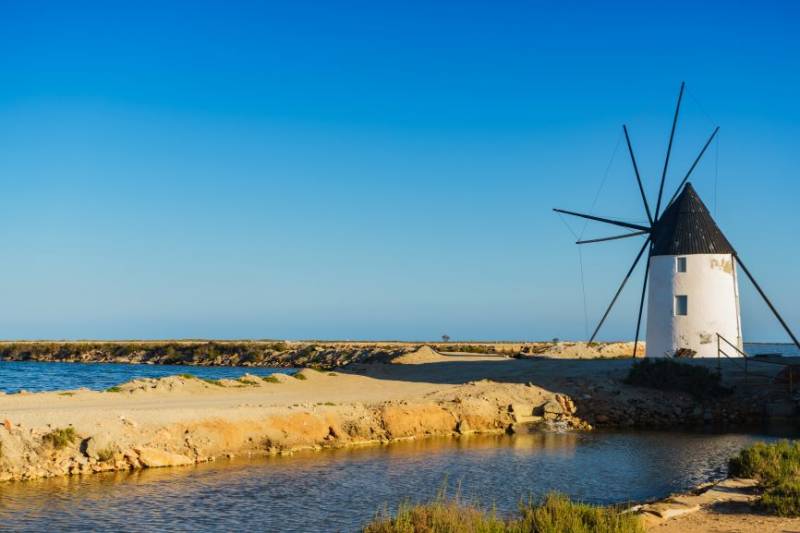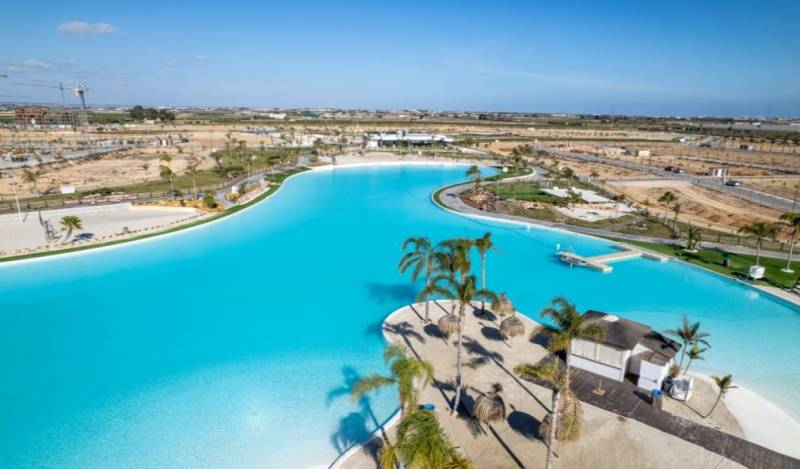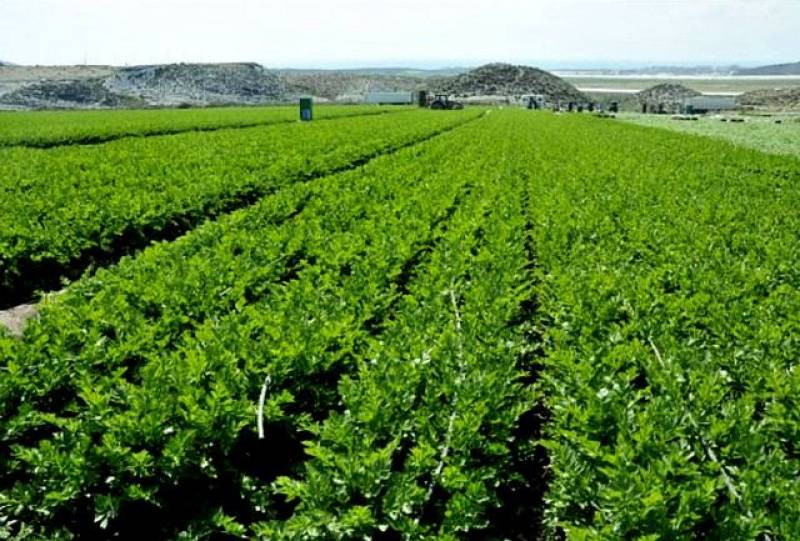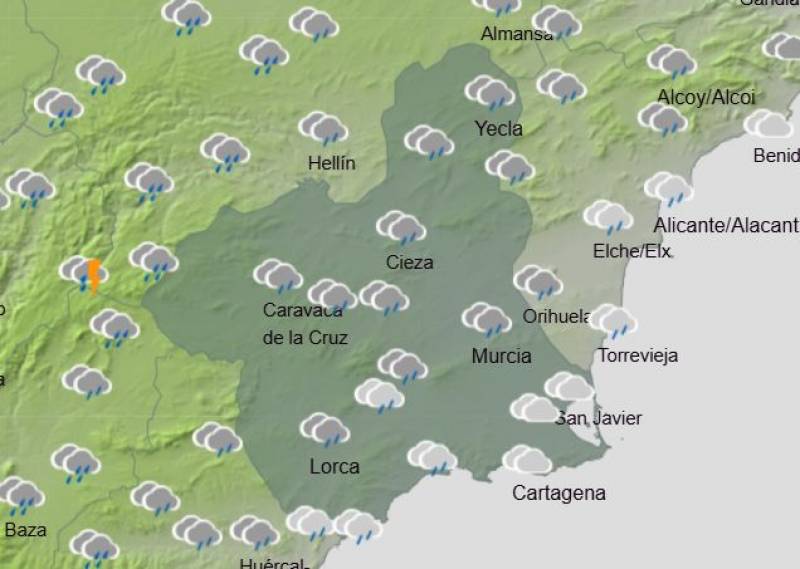
To be listed on the haciendadelalamo TODAY MAP please call +34 968 018 268.
article_detail
Murcia has the worst drought in Spain but no water restrictions. Why?
The Region of Murcia is a “success story” when it comes to dealing with water shortages, and could show the rest of Spain – and Europe – how it’s done

Salt flats at San Pedro del Pinatar, Murcia
Last month’s rains notwithstanding, it has been a drier than usual year for the south and east of Spain. Drought has fairly ravaged the Mediterranean areas of the country, from Catalonia to Andalucía, and numerous municipalities and millions of people living there have had to live with water restrictions.
But there’s one place where things are – miraculously – very different. The Region of Murcia is one of the driest regions in all of Spain, and the reservoirs that feed the water supply are at worryingly low levels, yet it is a long way from introducing any water restrictions for the summer.
Why is that?
Mainland Spain is split into 16 different areas for water management, and Murcia almost entirely corresponds to the Segura basin area. In this area, water levels are falling week by week, and right now are at about 20% capacity.
Compare that with 35% at this same point last year, or the average over the last decade of 42%. In Barcelona, a state of emergency due to drought was decreed when their reservoirs were at 16%, so not far off the Murcia level.
Altea in Alicante has already put a ban on filling up swimming pools in several areas of the municipality due to the drought.
However, as expert in water resources and teacher of Geography at the University of Murcia, Encarna Gil, says, Murcia is different for one simple reason.
“We are always in drought,” she says. “The southeast of Spain is the most arid part of the mainland, only similar to a part of León and another part of the Ebro depression. But with one difference: we have less rainfall.”

The manmade ‘Crystal Lagoon’ at Santa Rosalía Lake & Life Resort
As Gil explains, rainfall in Murcia is very irregular, with an average of only 300 millimetres per year and a dry period that can last for up to 10 months of the year: “We have a Mediterranean climate where it is normal to experience a summer drought, but we have an extreme case. It should rain in autumn, spring and winter, but the peculiarity of our area is that this is not the case.”
This should, in theory, cause massive problems for Murcia, a Region that – somewhat conversely it may seem – has one of the largest and most productive fruit and vegetable agriculture industries in the country.
But it is exactly this consistent lack of rainfall that means Murcia is so well placed to deal with drought, and not suffer the consequences.
“Our water use is much higher than what we have naturally, and we have been without water for a long time because there was no water in the reservoirs, how have we always overcome this without restrictions? Because of desalinated water and water treatment plants,” explains Gil.
Knowing that water is and has always been an issue for Murcia, the authorities have for a long time invested heavily in desalination plants and wastewater treatment plants to be able to maintain a steady supply of water. In fact, they were even tipped at one point to be in a position to send water by boat to help out Andalucía with their drought situation.
According to data provided by the Spanish Association of Water Supply and Sanitation, Murcia is, in fact, the Spanish territory where most water is regenerated and reused, with more than 90% of the water staying in constant circulation.
Murcia is followed by Alicante, a long way behind with 65%. For Spain as a whole, the percentage of water reused is much lower – just 8.1% – and in Europe it is only 5%.
“In Murcia we treat even more water than what is required [by EU law], and to this water we add the water from the Tajo-Segura water transfer and groundwater. Of course, Murcia is a success story because we are reusing almost 100% of our water. We are reusing everything and that reactivates the circular economy of water,” underscores Encarna Gil.
The Murcia Sanitation and Purification Entity (ESAMUR), a public body dedicated to water management in the Region, records as many as 100 treatment plants in the territory, generating up to 121 cubic hectometres of water per year, a volume that is four times the annual consumption of the entire population of the city of Murcia.
In terms of desalination plants, Murcia is, after the Canary Islands, the autonomous community in Spain with the highest number of plants. In addition, the second desalination plant with the largest production capacity in Spain is located in the southeast. This is the Águilas Guadalentín plant, with a capacity of up to 70 cubic hectometres per year. These facts contrast, for example, with the situation in Catalonia, which has just three plants and where a drought situation had to be declared.
“Will we in Murcia reach the situation in Catalonia in terms of restrictions? The answer is no,” assures Gil. “For rainfall we would be the same as Catalonia, but we have infrastructure that they don’t have there.”
In addition to using a large proportion of water from wastewater and desalination plants, Murcia’s agriculture sector, a highly water-intensive activity, works to a great degree on a digitalised drip irrigation system, one of the most water-saving techniques that exists.

Celery crops in Murcia
The Murcia Institute of Agricultural and Environmental Research and Development reports that this technique is used in 90% of the agricultural plantations in the territory, compared to only 16% in the rest of the country.
That’s not to say that the drought doesn’t affect Murcia. It does, but this part of Spain just began to prepare for it earlier and with more technological resources than other parts of the country, which could learn a lot from Murcia’s ‘success story’.
Gil concludes that the key to the future is to continue saving water, to continue to innovate and to continue investing.
“We also have to do research into different types of crops, we have to look for new varieties that need less water. This is the way forward.”
Loading
See more environmental news about Spain:
OR
Sign up for the Spanish News Today Editors Roundup Weekly Bulletin to get a comprehensive email with all the week’s news for Spain, Murcia, Alicante and Andalucía.
Get a sneak peek – here are a few of our recent Subscription Bulletins:
25% Discount Special Offer subscription:
36.95€ for 48 Editor’s Weekly News Roundup bulletins!
Please CLICK THE BUTTON to subscribe.
Contact Murcia Today: Editorial 000 000 000 /
Office 000 000 000

























